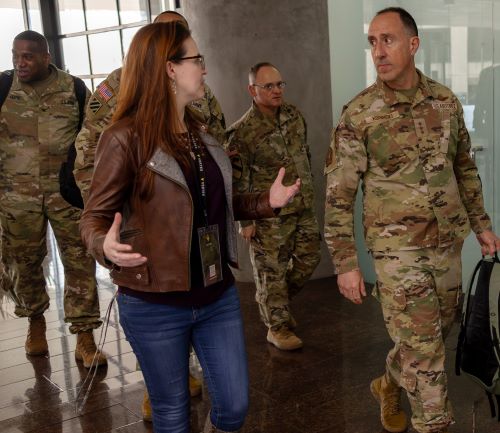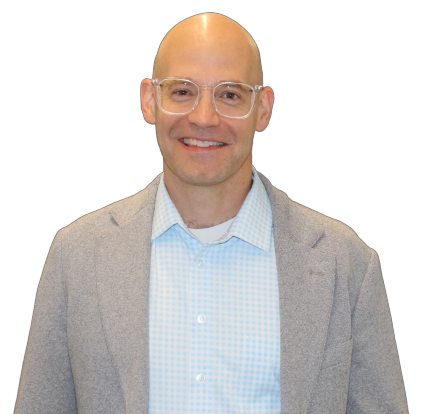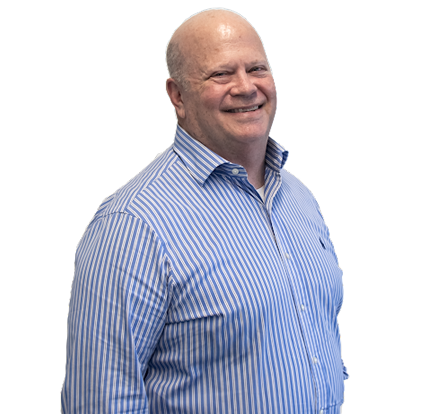Who We Serve
Government Organizations
We help the Army incorporate new technology and capabilities that address today's toughest military challenges. Through our transition-minded approach to innovation, we keep Army problem owners in the driver's seat and empower them through engagement with technical experts, end users, and industry solvers to develop the right solutions for Soldiers' needs.
We serve our government partners by…
- Facilitating engagements with end users, subject matter experts, and industry solvers for consistent project alignment
- Increasing the speed and breadth of capability development
- Connecting with the best solvers across the nation to identify the most promising solutions and new technologies
- Providing multiple funding sources, benefiting budgets and tight deadlines
Commercial Solvers
We align qualified companies' capabilities with Army challenges to gain technical expertise, advanced technology development, and unique perspectives to solving Army problems. During solution development, AAL provides access to information and subject matter experts, transparency throughout the process, and capital at the speed of business.
We serve commercial solvers by…
- Guiding companies through the application, solicitation, development, and transition process
- Simplifying solicitations by removing military jargon
- Tailoring contracts to support technology development and the needs of small businesses
- Facilitating access to end users, Army experts, and other commercial solvers to create better-informed and effective solutions
Learn more about AAL
Learn about AAL through our work. Check out examples from our diverse project portfolio, success metrics, and frequently asked questions.

EXECUTIVE PROFILES




EXECUTIVE PROFILES
As Army Applications Laboratory's executive director, Dr. Casey Perley leads the mission to reshape how the Army works with industry to provide the best tech in the world to the best Army in the world. Her vision is for AAL to work from problem inception to sustainment hand in glove with stakeholders across the Army and the Department of War to accelerate and assess the Army's ability to ingest innovation.
Casey knows AAL better than anyone, having served most recently as the deputy director and before that as the first director of Insights and Analysis, where our scientists and entrepreneurs collaborate to bring the best companies and technologies into solving Army problems. Prior to AAL, Casey was a postdoctoral fellow at the U.S. Army Medical Research Institute of Infectious Diseases (USAMRIID), where she managed research projects across a range of topics and stakeholders. She designed DNA vaccines and worked in the lab with bio threats including Ebola. Casey holds a PhD in Molecular Genetics and Microbiology from Duke University and a BS in Molecular Biophysics and Biochemistry from Yale.
Casey's orchestral harp work can be heard on more than 120 recordings, one of which was nominated for two Grammy awards.
COL Robert "Clay" McVay leads the day-to-day operations of the Lab. He manages our diverse team of military, science, tech, and academic professionals to harness real innovation and accelerate technology into the hands of Soldiers. He oversees AAL’s budget, events, and special initiatives; manages talent; and ensures the Lab has the resources it needs to succeed.
With just over 22 years in the Army, Clay has deployed to Kosovo in support of peacekeeping operations, and twice to Iraq in support of combat operations. Most recently he completed a fellowship at the University of Texas at Austin with the Clements Center for National Security. Prior to that, he was in the Army Futures Command headquarters and on the Army staff where he helped develop the Army's budget for its major transformative capabilities including Army modernization priorities such as long-range precision fires, next-generation combat vehicles, future vertical lift, and more.
Clay has both bachelor's and master's degrees in mechanical engineering. He taught mechanical engineering courses at the United States Military Academy at West Point. His research was focused on human-borne exoskeleton devices and other robotics.
Paul and the ops team are the engine that keeps AAL moving forward. Paul was an Army artillery officer with 23 years in uniform serving in units from tactical to strategic, including two NATO tours. After he retired, Paul worked at Installation Management Command &mdash Europe where he supported facilities for roughly 165,000 US Army personnel living on or near the eight Army garrisons in Europe, including the first ever U.S. Army Garrison in a former Warsaw Pact country in USAG Poland, in Poznan. He worked as a contractor for G3 Exercise Division US Army Europe in Germany where he was responsible for planning and executing multinational exercises
Paul met his wife Wendy in 1989 at a Bruce Springsteen concert in Berlin. They have two grown children — Melissa and Andrew — and a two-year-old granddaughter Olivia. In keeping with Wendy's lifelong plan (she’s from chilly UK), they settled in Texas in the heat of the summer.
Dr. Zach Harrell is the Director of Insights and Analysis at Army Applications Laboratory, where he leads a multidisciplinary team of scientists, engineers, and analysts. His team specializes in performing rigorous due diligence on industry partners and technologies, ensuring the Army selects the best companies to solve its most pressing problems. Zach and his team are also instrumental in translating Army technical information into actionable project communications that resonate with commercial problem solvers.
Before joining AAL, Zach worked at several startups where he developed advanced processes for microelectromechanical systems and functional surface chemistry on carbon nanotubes. He earned his BS in Physics from St. Mary's University and his MS and PhD in Materials Physics from the University of Texas at San Antonio. Outside of work, Zach enjoys cooking, playing soccer, and snowboarding with his family. An avid craft beer enthusiast, he's always on the lookout for the next great brew.
Frequently Asked Questions
We pull from several different funding sources such as RDT&E, SBIR, and private capital, allowing us to cast a wider net for solution development while improving the odds of companies' success on projects. AAL is part of the Army SBIR family, and created a unique program called SPARTN to unleash the full potential of SBIR as an innovation tool.
With SPARTN you get…
- Deliverable-based capital
- Faster time to award notification and contract
- Better access to Army problems and stakeholder
AAL is purpose built to bring innovation to the Army. We are bound by the same rules and laws as all government organizations, however we consistently improve our processes and create effective solution development through our Cohort Program, SPARTN SBIR funding approach, and VERTEX events.
The three red lines in our logo represent industry, government, and academia spurring each other forward to advance bleeding edge technology. Together, we develop stronger solutions that improve the security and effectiveness of Soldiers.